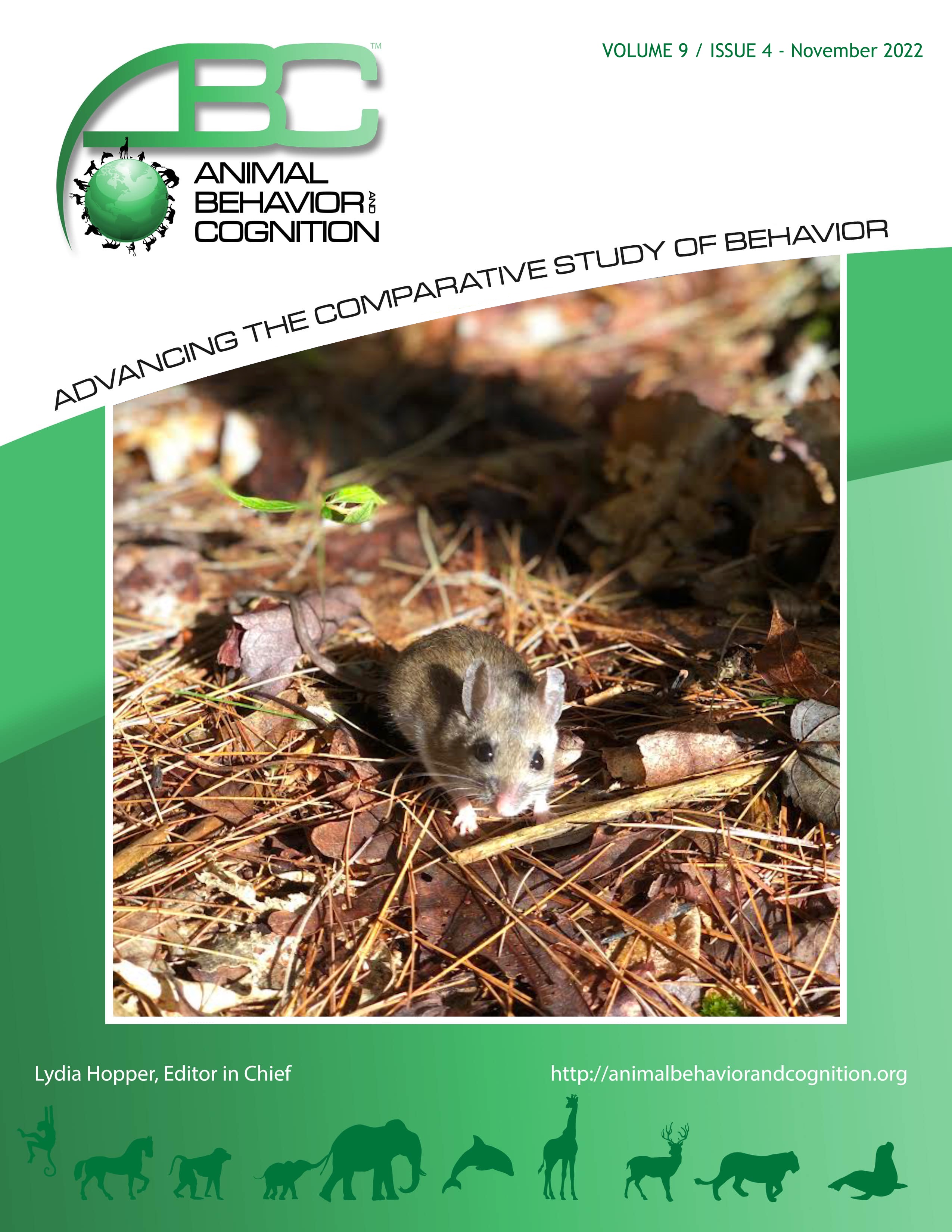Vol 9, Issue 4, November 2022
A Field-Based Adaptation of the Classic Morris Water Maze to Assess Learning and Memory in a Free-Living Animal
Citation
McKay, L., Hunninck, L., & Sheriff, M. J. (2022). A field-based adaptation of the classic Morris Water Maze to assess learning and memory in a free-living animal. Animal Behavior and Cognition, 9(4), 396-407. https://doi.org/10.26451/abc.09.04.03.2022
Abstract
Free-living animals rely on cognitive functions, such as learning and memory, for numerous aspects of their survival. However, research involving these mechanisms is often limited to the laboratory where animals are far removed from natural influences. Here, we adapted the Morris Water Maze (MWM) for use in the field to test learning and memory of free-living white-footed mice, Peromyscus leucopus. The MWM consists of a pool filled with opaque water and a platform that is hidden beneath the surface of the water. Mice were tasked with finding an escape platform using proximate-cue based spatial learning skills across trials within and between two tests. The two tests occurred 2 hrs apart and each consisted of 5 trials with a maximum search time of 60 s, separated by 15-s breaks. We found mice demonstrated rapid learning within the first 5 trials, as indicated by a faster time and reduced distanced swam to find the platform in trial 5 as compared to trial 1 in Test 1. We also found mice remembered the task, as indicated by equivalent performance (in time and distance) after the two-hour delay period (i.e., performance in Test 2 trial 1 was similar to that in Test 1 trial 5). Lastly, we found that there was no increase in performance as mice completed an additional 5 trials (i.e., no difference in Test 1 trial 5 vs. Test 2 trial 5). By assessing several variables that serve as standard metrics for learning and memory within the MWM, we were able to illustrate the ability of wild mice to successfully navigate within a modified version of an established learning/memory paradigm. This study is important for promoting more accessible forms of cognitive testing in free-living animals and use of such a method could provide insights into how animals cope with environmental stressors in their natural environment such as anthropogenic disturbance, invasive species, and habitat degradation. A better understanding of cognitive behavior in wild animals may help diminish the disparity of knowledge that is often present between laboratory and field research.
Keywords
Cognition, Cognitive ability, Cognitive behavior, Peromyscus leucopus, White-footed mouse
